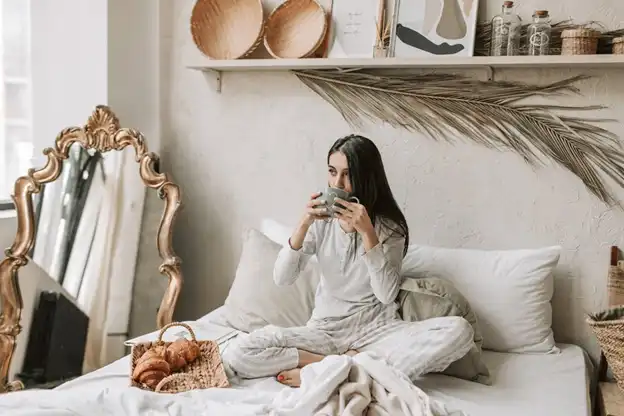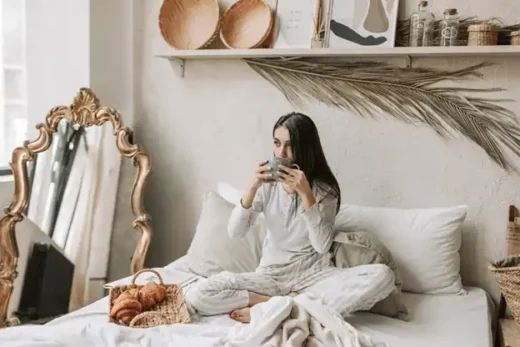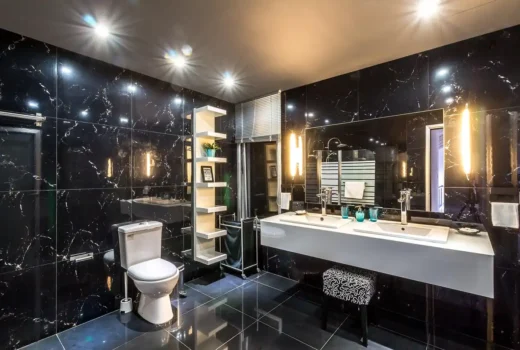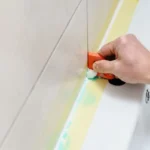Home investment for better life guide, House bathroom refurb advice, Property renovation style
Investing in Your Home for a Better Everyday Life
July 7, 2025
When people talk about improving their lives, the focus often falls on habits, routines, or new goals. What’s sometimes missed is how much of that progress depends on the space you live in every day. A well-designed home supports how you move, think, and recharge.
The little things in a space matter—where you put your keys, how fast you can get ready in the morning, whether there’s a spot that helps you unwind. Over time, these daily moments shape how you feel about being at home.
Upgrading your space doesn’t always mean big renovations. It can start with thoughtful changes in the rooms you use most. These updates can make life easier, more comfortable, and more enjoyable without overcomplicating the process. When your home works better for your lifestyle, the benefits show up in your routine without you needing to think about it.
Start with the Most-Used Spaces
If you’re not sure where to begin, focus on the rooms that get the most traffic. Kitchens and bathrooms are used every day, and when they’re designed well, they improve the overall flow of your day. Whether it’s cooking a quick meal or getting ready for work, small upgrades in these spaces can make a big difference.
In bathrooms, layout and storage are two of the most common pain points. A cluttered counter or lack of proper lighting can slow down your mornings or make winding down at night harder than it needs to be. This is where a few key upgrades go a long way.
For bathrooms in particular, working with experienced bathroom remodelers can help you design a layout and look that supports your daily habits, from getting ready faster in the morning to relaxing more easily at night. They bring in practical knowledge about fixture placement, lighting, and how to make a space both functional and visually calm.
You don’t need luxury materials or oversized layouts to get a better bathroom. Good planning and the right improvements, like more storage, better lighting, or updated tile, can turn a busy, awkward space into one that actually supports your routine. It’s the kind of change you feel every time you use it.
Kitchens are another smart place to focus. Even if you’re not someone who cooks elaborate meals, you still use this space constantly. Improving traffic flow, adding more prep space, or reorganizing cabinets can change how you interact with your home every single day.
If you’re already planning updates, think about where delays happen. Are you always short on counter space? Is it hard to clean certain corners? These are good places to start. Fixing these issues doesn’t just help with cooking; it helps with how smoothly everything runs when you’re trying to get out the door or settle in for the evening.
Starting with these high-use areas makes sense because the return shows up immediately in how your home feels and functions. These spaces touch nearly every part of your daily life, so improving them tends to have the greatest impact.
Make Comfort a Priority
Comfort looks different for everyone, but there are a few upgrades that work for most homes. You don’t need to start with a full redesign. Instead, focus on small changes that remove friction from your daily life.
Adding insulation or replacing windows helps keep indoor temperatures stable throughout the year. If one room always feels colder or hotter than the rest, this type of improvement makes a big difference. It helps you feel more relaxed without adjusting the thermostat every few hours.
Simple features like soft-close drawers, quiet appliances, or motion-sensor lighting can also change how the home feels. These upgrades don’t grab attention, but they’re noticeable in daily routines. Lighting that dims gradually or turns on when you walk in makes mornings and evenings feel calmer. Furniture that supports your body better also plays a role in daily comfort.
Comfort doesn’t mean adding more stuff. It’s about removing little annoyances that build up over time. When your home supports your habits without getting in the way, everything else feels easier.
Choose Materials That Hold Up
If you’re putting time and money into your home, it makes sense to choose materials that last. That doesn’t mean picking the most expensive option. It means looking for surfaces that can handle regular use without constant repairs.
In kitchens, that might be a countertop that resists stains and scratches. For flooring, it could mean wood or tile that stands up to heavy foot traffic. If you have kids or pets, consider finishes that are easy to clean and don’t show wear quickly.
Focus on timeless design over trendy looks. Neutral colors, natural textures, and simple lines age well and work across different styles. You don’t need everything to match. Just aim for materials that feel solid, look clean, and perform well in the space they’re in.
Spending a bit more on quality surfaces upfront often reduces the need for replacements later. It also keeps your home looking better, longer.
Add Features That Support Your Routine
The best home upgrades help your space function better without adding stress. Think about your daily habits and where your home slows you down.
If your phone is always running low, adding outlets with built-in USB ports in common spots can be helpful. If groceries pile up on the counter, more pantry storage might be the fix. If your keys always go missing, a small wall shelf by the door can solve that.
Convert unused corners or underused rooms into spaces you’ll actually use. A spare room can become a quiet office. A wide hallway can fit a bench with shoe storage. These tweaks don’t need to be big; they just need to make sense for how you live.
When your space fits your routine, you spend less time cleaning up, adjusting, or working around design flaws. That makes each day feel a little easier.
Don’t Forget Outdoor Living
Outdoor areas can be easy to overlook, but they add real value to daily life. A small deck or patio becomes an extra room when the weather is nice. Even a small seating area near the front door can change how you wind down after a long day.
Think about adding shade, lighting, or seating that fits your space. These features help you use your yard or porch more often and make gatherings or quiet mornings more enjoyable.
A home that supports your daily life is one of the best investments you can make. When each room works the way you need it to, you feel more grounded, more focused, and more at ease. You don’t need big renovations to get there; you just need the right changes made with care and purpose. Small shifts in layout, comfort, or function can completely change how your home serves you. And that’s something you’ll notice every single day.
Comments on this guide to Home investment for better life – house refurb advice article are welcome.
Home Bathrooms Remodelling
Bathrooms Remodel
How to plan a bathroom remodel
10 stunning bathroom remodelling ideas
How to make your bathroom remodel functional
Property Design
Contemporary Property Designs – recent architectural selection from e-architect below:
Comments / photos for the Home investment for better life page welcome.






